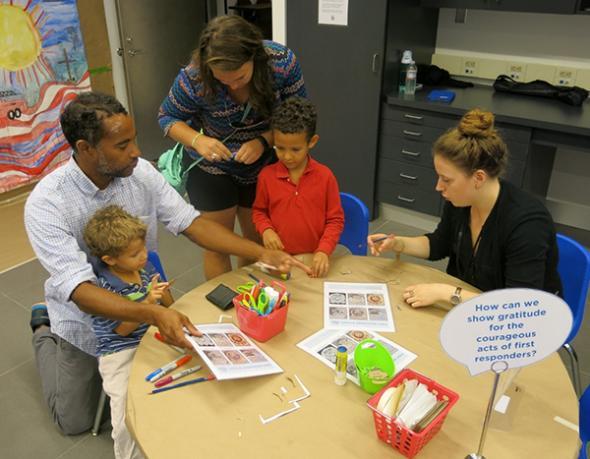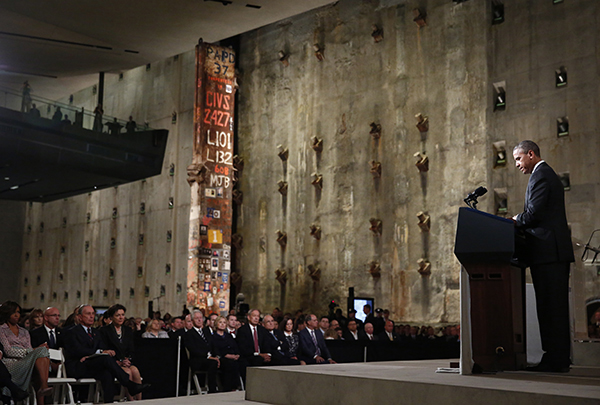Make a donation to the museum
How to Talk to Kids About 9/11
How to Talk to Kids About 9/11

Talking to kids about 9/11 is challenging. For parents, caretakers, friends and families, broaching this complex subject with children is as tough for many today as it was soon after the 2001 attacks.
But this generation and the ones to follow are key in helping to preserve one of the most influential times in world history.
So answering their questions, and asking some of your own to learn what they may believe to be true about this historic event, may be a path to a better understanding.
Part of the 9/11 Memorial Museum’s mission is to educate future generations about 9/11. In fulfilling that commitment, the museum’s education staff developed a guide for talking to kids about terrorism and the 2001 attacks.
If you are planning to visit the museum with children, you can find plenty of the museum’s official resources and information about on-site programming designed for children and families online.
By 9/11 Memorial Staff
Previous Post
A Look Back at 2014

From the historic opening of the museum to welcoming one million visitors, including heads of state and foreign dignitaries, 2014 marks a monumental year for the 9/11 Memorial and Museum.
Next Post
The Meaning Behind Arrangement of the 9/11 Memorial Names

The 9/11 Memorial arranged the names of victims in part by “meaningful adjacencies” – where they were at the time of their death and what personal relationships they shared with other victims.